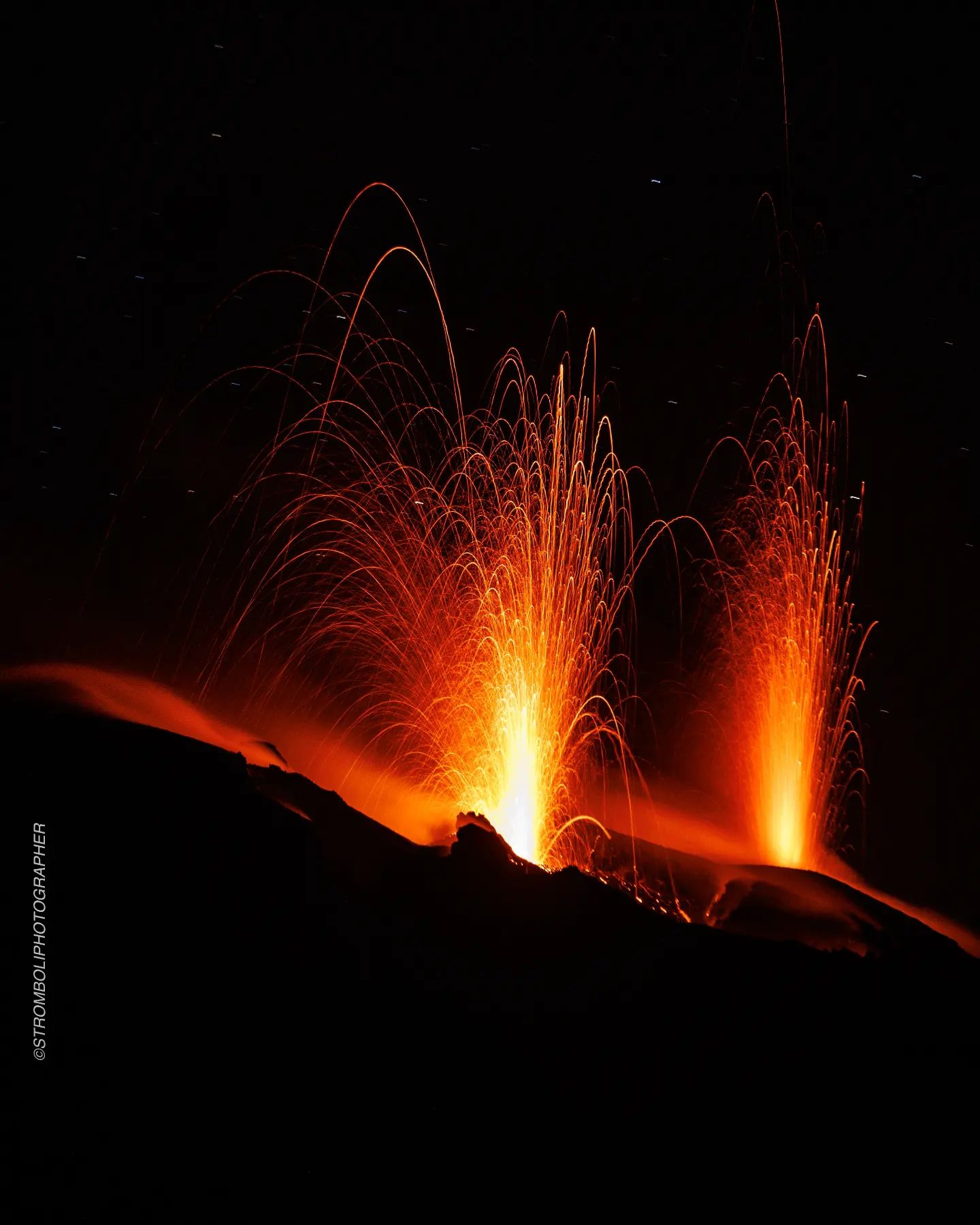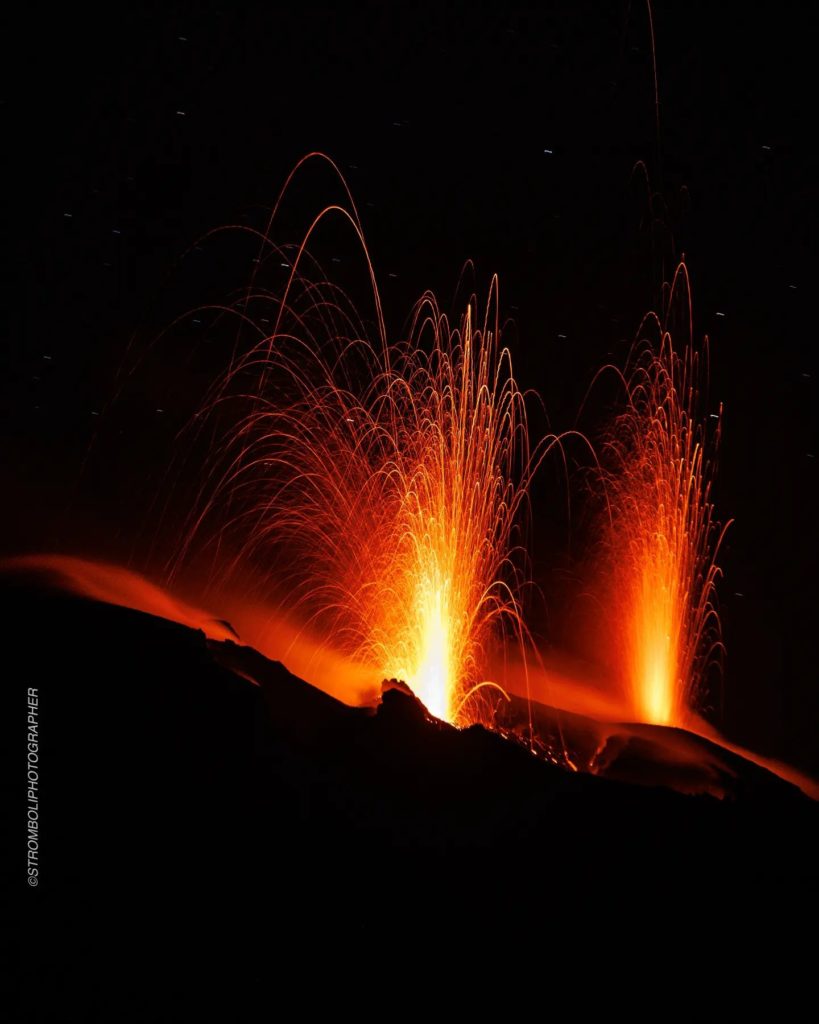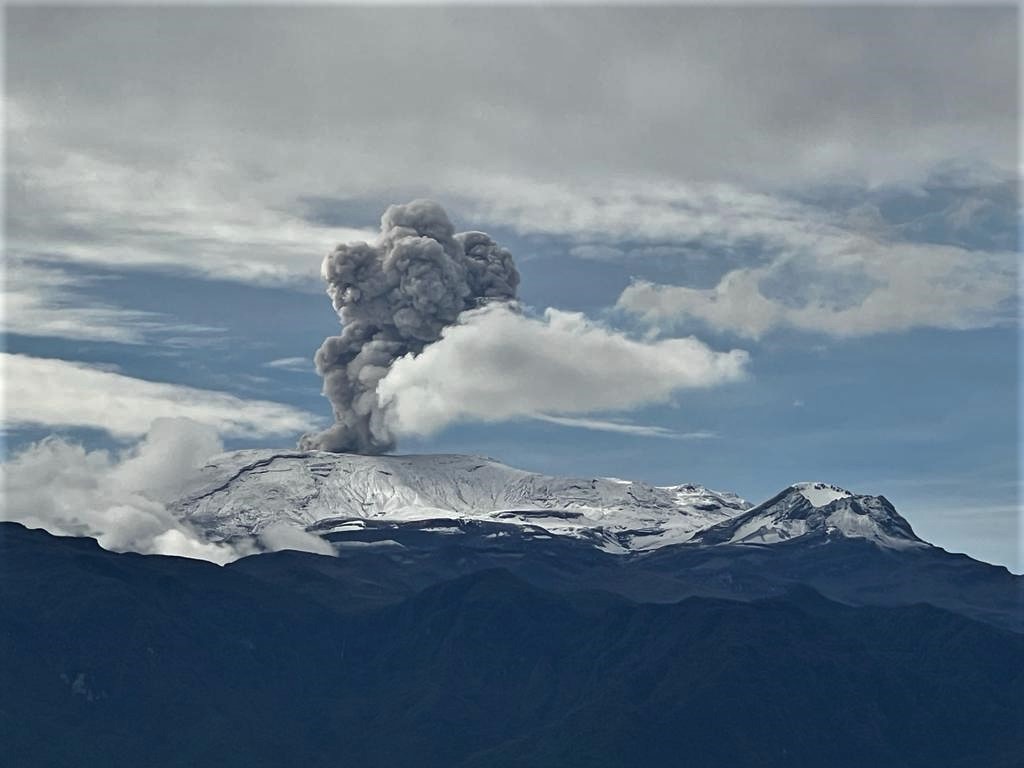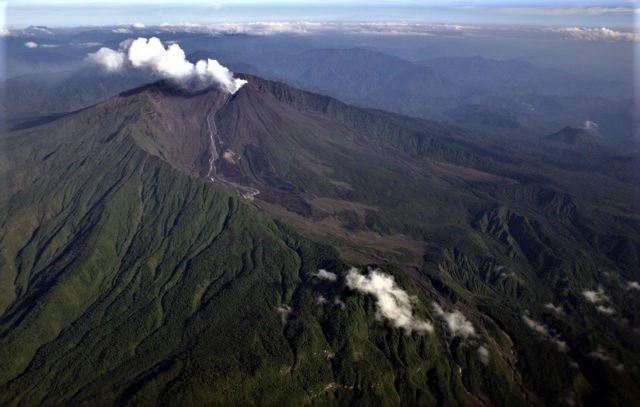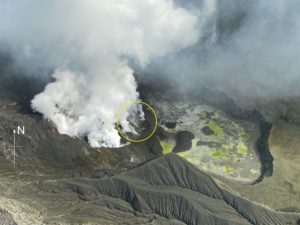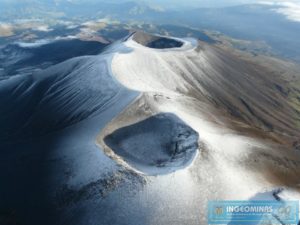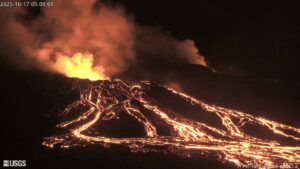June 28 , 2023.
Italy / Sicily , Etna :
WEEKLY BULLETIN, from June 19, 2023 to June 25, 2023. (issue date June 27, 2023)
ACTIVITY STATUS SUMMARY
In the light of the monitoring data, it is highlighted:
1) VOLCANOLOGICAL OBSERVATIONS: Degassing activity of the summit craters, in particular continuous degassing at the Bocca Nuova crater (BN) and at the Southeast crater (SEC).
2) SEISMOLOGY: Low seismic activity due to fracturing; the amplitude of the volcanic tremor remained mainly at average levels.
3) INFRASOUND: Weak infrasonic activity.
4) GROUND DEFORMATIONS: There are no significant variations
5) GEOCHEMISTRY: SO2 flux at medium-low level
The CO2 fluxes show a downward trend settling on medium-high degassing values.
There are no updates on the Helium isotope ratio.
The partial pressure of dissolved CO2 does not show any significant variations.
6) SATELLITE OBSERVATIONS: Thermal activity observed from the satellite was generally weak.
VOLCANOLOGICAL OBSERVATIONS
The monitoring of the volcanic activity of Etna was carried out through the analysis of images from the network of surveillance cameras of the INGV, Osservatorio Etneo (INGV-OE) and various inspections in the summit area. Observations of activity at the summit craters were sometimes discontinuous due to the presence of haze due to high humidity.
During the week, the activity of the summit craters of Etna was characterized by intense and continuous degassing at the level of the crater of Bocca Nuova (BN) and the Southeast crater accompanied by a fumarolic type degassing along the southeast crater rim.
The strong mist did not allow to observe the weak steam emissions from the Northeast crater and the Voragine crater reported in the bulletins of the last few weeks.
Source : INGV.
Photo : Gio Giusa
Italy , Stromboli :
WEEKLY BULLETIN, from June 19, 2023 to June 25, 2023. (issue date June 27, 2023)
ACTIVITY STATUS SUMMARY
In the light of the monitoring data, it is highlighted:
1) VOLCANOLOGICAL OBSERVATIONS: During this period, normal Strombolian activity was observed with splashing activity at the S2 sector.
The total hourly frequency oscillated between average values (11 events/h) and high values (17 events/h).
The intensity of the explosions was mainly low to medium in the North crater zone and low to high in the Center-South crater zone.
2) SEISMOLOGY: The seismological parameters monitored do not show any significant variations.
3) GROUND DEFORMATIONS: Ground deformation monitoring networks show no significant variations.
4) GEOCHEMISTRY: The flow of SO2 is placed between an average level.
The CO2 flux in the Pizzo area is at an average level.
There are no C/S data updates in the plume.
There is no update on the isotope ratio of helium in groundwater.
5) SATELLITE OBSERVATIONS: The thermal activity observed from the satellite was generally weak.
VOLCANOLOGICAL OBSERVATIONS
During the observation period, the eruptive activity of Stromboli was characterized by the analysis of the images recorded by the surveillance cameras of the INGV-OE at an altitude of 190m (SCT-SCV) and of the Pizzo. The explosive activity was mainly produced by 2 (two) eruptive vents located in the North zone of the crater and by 4 (four) vents located in the Center-South zone. Due to the unfavorable weather conditions of June 21, visibility was insufficient for a proper description of the eruptive activity.
Observations of explosive activity captured by surveillance cameras.
In the area of the North crater (N), with a vent located in sector N1 and one in sector N2, explosive activity of low (less than 80 m high) to medium (less than 150 m high) intensity has was observed in both areas. The eruptive products consisted mainly of coarse materials (bombs and lapilli) sometimes mixed with fine materials (ash). The average frequency of explosions varied from 2 to 6 events/h.
In the Center-South (CS) area, sector S1 showed weak gas activity under pressure sometimes associated with the emission of coarse materials while sector C did not show explosive activity. Sector S2, with three active vents, mainly showed explosive activity of varying intensity from low to high, emitting coarse and fine material, sometimes accompanied by weak projection activity. The average frequency of explosions varied from 8 to 12 events/h.
Source : INGV.
Photo : Stromboli Stati d’animo
Colombia , Nevado del Ruiz :
Manizales, June 27, 2023, 2 p.m.
Regarding the monitoring of the activity of the NEVADO DEL RUIZ VOLCANO, the MINISTRY OF MINES AND ENERGY through the COLOMBIAN GEOLOGICAL SERVICE (SGC) informs that:
Volcano activity level changes to YELLOW activity LEVEL or (III): CHANGES IN THE BEHAVIOR OF VOLCANIC ACTIVITY
In recent weeks, the activity of the volcano has shown a gradual decrease in several of the monitored parameters, after the recorded increase which led to the change in level from yellow to orange on March 30. Since the behavior of the volcano has returned to a lower level of instability and the probability of an eruption of considerable magnitude in terms of days or weeks has decreased, the SGC determines that the Nevado del Ruiz volcano is changing its Orange (II) to yellow (III) activity level.
This change in activity level is based on the results of observation, analysis and comprehensive evaluation of the continuously monitored parameters in the volcano, which indicate the
following changes:
● A gradual decrease in seismicity linked to the fracturing of the rock within the volcanic structure. After reaching the highest daily rates (March 29 and 30, 2023) since instrumental monitoring of the volcano began in 1985, this type of seismicity has returned to levels that existed before March 24, when it began. to increase considerably.
● The location of seismic events is variable and scattered around the crater without showing any pattern at depth, as has been reported in recent weeks. This differs markedly from when seismicity migrated along the La Palestina fault in the southwest sector of the volcano towards the Arenas crater with an increasingly deep pattern.
● The energy levels of the rock fracturing earthquakes are lower than those recorded during the last week of March and the first weeks of April.
● Currently, the recording of low energy earthquakes in the Arenas crater -related to the seismic activity associated with the bulge or lava dome existing at the bottom of the crater- is occasional ((April 13, the largest number of earthquakes of this type have occurred since 2015, the year they were first observed.).
● The seismicity associated with the movement of fluids inside the volcanic conduits records variations in the number of earthquakes and in the levels of energy released, but does not show significant changes suggesting the movement of magma towards higher levels. superficial.
● The degassing processes related to the release of gases such as sulfur dioxide (SO2) and water vapor into the atmosphere have not experienced significant variations in recent weeks, which indicate pressurization processes of the volcanic system and/or magma rising to the surface.
● Volcanic surface deformation is minor and no such significant processes are evident at the volcano.
● Pulsatile and continuous ash emissions have decreased.
● The energy level of the thermal anomalies detected at the bottom of the crater decreased compared to those reported between April 7 and April 26, which reached values similar to those presented in 2015, during the process of extrusion and setting. in place of the lava dome in the Arenas crater.
Volcano activity level changes to YELLOW LEVEL or (III): CHANGES IN THE BEHAVIOR OF VOLCANIC ACTIVITY
Source et photo : SGC
Hawaii , Kilauea :
Tuesday, June 27, 2023, 8:01 AM HST (Tuesday, June 27, 2023, 18:01 UTC)
19°25’16 » N 155°17’13 » W,
Summit Elevation 4091 ft (1247 m)
Current Volcano Alert Level: WATCH
Current Aviation Color Code: ORANGE
Activity Summary:
The summit eruption at Kīlauea volcano is paused. All recent eruptive activity was confined to Halemaʻumaʻu crater within the summit caldera at Kīlauea, and no unusual activity has been noted along the volcano’s East Rift Zone or Southwest Rift Zone.
Halemaʻumaʻu crater Observations:
Currently no lava is actively erupting in Halemaʻumaʻu crater. Overnight webcam views showed some incandescence from previously erupted lava as the lava proceeds to cool.
Summit Observations:
Simultaneous with the pause in the eruption, seismic activity (including eruptive tremor) in the summit region has been low. Over the last 24 hours, summit tiltmeters have measured slight, gradual inflation. A sulfur dioxide (SO2) emission rate of approximately 160 tonnes per day was measured on Thursday, June 22.
.
View looking southwest across the Halemaʻumaʻu crater floor within the Kīlauea summit caldera, captured during a helicopter overflight on Thursday, June 22, 2023. Lava erupted during the most recent eruption comprises the crater floor in the bottom half of the photo. Remnants of the main island—formed during the early stages of the December 20, 2020 eruption—protrude above the cooled lava lake in the center of the photo, and the recent eruptive vent on the southwest wall of Halemaʻumaʻu is visible behind and right of the main island.
Rift Zone Observations:
No unusual activity has been noted along the East Rift Zone or Southwest Rift Zone; steady but low rates of ground deformation and seismicity continue along both. Measurements from continuous gas monitoring stations in the middle East Rift Zone—the site of 1983–2018 eruptive activity—remain below detection limits for SO2.
Source : HVO.
Photo : USGS / N. Deligne.
Ecuador , Reventador :
DAILY REPORT OF THE STATE OF THE REVENTADOR VOLCANO, Sunday June 25, 2023.
Information Geophysical Institute – EPN.
Surface Activity Level: High, Surface Trend: Unchanged
Internal activity level: Moderate, Internal trend: No change
Seismicity: From June 24, 2023, 11:00 a.m. to June 25, 2023, 11:00 a.m.:
The following table shows the number of seismic events from the REVN reference station over the past 24 hours.
Explosion(EXP):8
Long Period (LP):25
Transmit Tremor (TREM):5
Volcano-tectonics (VT):1
Rains / Lahars:
Rains were recorded in the volcano area without generating mudslides and debris. **In the event of heavy rains, these could remobilize the accumulated materials, generating mudslides and debris that would descend the flanks of the volcano and flow into the adjacent rivers**
Emission / Ash Column:
In the afternoon and night of yesterday, columns of gas and ash emission were observed, with heights less than 700 meters above the level of the crater, with a West and North-West direction .
Observation:
The volcano remained cloudy most of the time.
Alert level: Orange.
Source : IGEPN.
Photo : Patricio Ramon, (Instituto Geofisca, Escuela Politecnica Nacional).

